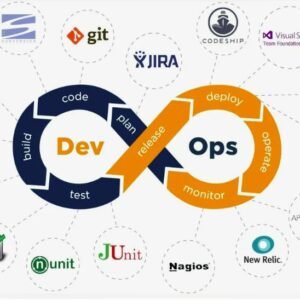How do version control systems like Git contribute to effective software development?
In the dynamic realm of software development, the need for effective collaboration and code management is paramount. Version Control Systems (VCS) play a pivotal role in ensuring seamless coordination among development teams, with Git emerging as a leader in this domain.
Evolution of Version Control
In the early days, developers faced challenges in managing code changes, leading to versioning issues and project bottlenecks. Traditional version control methods struggled to keep pace with the growing complexity of software projects.
Introduction of Distributed Version Control Systems (DVCS)

The evolution of Distributed Version Control Systems marked a paradigm shift. Git, a DVCS, revolutionized the way developers handled code, allowing for decentralized collaboration and efficient branching strategies.
Git: A Leading VCS
Overview of Git
Git, created by Linus Torvalds, stands out as a distributed and open-source VCS. Its popularity is attributed to its speed, flexibility, and ability to handle projects of any size.
Key Features and Advantages
Git’s key features include branching, merging, and a decentralized architecture, making it the go-to choice for both small and large-scale software development projects.
Git Basics
Repository Creation
Creating a Git repository is the first step towards organized code management. Developers initiate projects, enabling efficient tracking of changes, issues, and contributions.
Branching and Merging
Git’s powerful branching system allows developers to work on isolated features, bug fixes, or experiments without affecting the main codebase. Merging facilitates the integration of these changes seamlessly.
Committing Changes
Regular commits capture the evolution of the codebase. Each commit represents a snapshot in the project’s timeline, providing transparency and traceability.
Collaboration with Git

Remote Repositories
Git enables collaboration beyond geographical boundaries through remote repositories. Developers can push, pull, and synchronize changes, fostering a collaborative and integrated development environment.
Pull Requests and Code Reviews
The pull request mechanism in Git streamlines the process of merging code changes. Code reviews enhance code quality and ensure adherence to coding standards.
Enhancing Productivity
Parallel Development
Git’s ability to support parallel development allows teams to work on multiple features simultaneously, accelerating project timelines.
Codebase Stability and Rollbacks
Version control empowers developers to maintain a stable codebase. If issues arise, rollbacks to previous states become effortless, minimizing downtime and errors.
Handling Conflicts
Conflict Resolution Strategies
Conflicts, inevitable in collaborative development, require effective resolution strategies. Git provides tools to identify, understand, and resolve conflicts efficiently.
Minimizing Merge Conflicts
Proactive strategies, such as regular communication and breaking down large tasks, help minimize the occurrence of merge conflicts, ensuring a smoother development process.
Git in Agile Development

Integration with Agile Practices
Git seamlessly integrates with Agile methodologies, fostering iterative development, adaptability, and continuous improvement.
Continuous Integration and Deployment (CI/CD)
Git’s compatibility with CI/CD pipelines streamlines the testing and deployment processes, enhancing the overall efficiency of software development.
Security in Version Control
Access Control
Git provides robust access control mechanisms, ensuring that only authorized individuals can modify the codebase, safeguarding against unauthorized changes.
Encryption and Authentication
Secure communication is facilitated through encryption, while authentication measures guarantee the legitimacy of contributors, reinforcing the integrity of the codebase.
Future Trends in Version Control
Automation and Artificial Intelligence
The integration of automation and AI in version control systems is poised to redefine development workflows, predicting code issues and automating routine tasks.
Decentralized Development Trends
The future holds exciting prospects for decentralized development trends, where contributors collaborate seamlessly, transcending organizational and geographical boundaries.
Challenges and Solutions
Scalability
As projects grow, scalability becomes a concern. Implementing Git best practices and optimizing workflows address scalability challenges effectively.
Learning Curve and Training
The learning curve associated with Git can be steep for beginners. However, investing in comprehensive training programs mitigates this challenge, ensuring a skilled and proficient development team.
Conclusion
In conclusion, version control systems like Git are indispensable tools in the software development arsenal. Their role in enabling collaboration, streamlining workflows, and ensuring code integrity contributes significantly to effective and successful software development.
FAQs
Git’s distributed nature, speed, and robust branching system set it apart, providing flexibility and scalability.
Git facilitates remote collaboration through features like remote repositories, pull requests, and seamless code reviews.
Commit guidelines, branching strategies, and code review etiquette are essential practices for efficient Git usage.
Git integrates seamlessly with Agile practices, supporting iterative development, continuous integration, and rapid deployment.
Scalability and the learning curve are common challenges, but best practices and comprehensive training mitigate these concerns.








